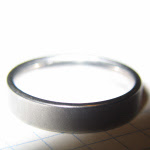The paper and poster
The poster I presented for my paper at the 127th AES convention is available for download here. It provides a good overview of all aspects of the paper, although it leaves out many technical details and explanations.
The simulator
At some point in the hopefully-near-future I will release the source and executable to the simulator itself. It will be written in LabVIEW 8.2.1 with the Digital Filter Design toolkit. It is more or less the exact same code as I used to build the test samples for the paper: there are a few optimizations I've left out of the code because I first wanted to release what was documented in the paper.
The listening test
One of the points I tried very hard to emphasize in the paper was that, while a listening test was conducted, which provided very interesting results, from the standpoint of comprehensiveness or authority, it wasn't a very good test.
- Only two people were involved with the test, who used two different protocols, neither of which was particularly great. Ideally, many more people should be involved, in a wider range of listening environments. And the protocol should be in some sense similar to the listening test you get at an audiologist: As the magnitude of the distortion varies in an automatic fashion, the listener records whether or not the distortion is audible. (This is actually pretty similar to Klaus did, as he did not have a computer audio setup in his listening room.) That is, the usual test concepts used for eg the absolute threshold of hearing should be employed, rather than ABX test concepts. This should allow a test which loses no statistical meaning, is potentially easier to take without the use of a computer (eg by burning all the test tracks onto CD), and avoids all the controversy around ABX testing.
- The audio samples used were chosen on the basis of relatively little evaluation for sensitivity to tracking distortion, and how easy they were to obtain and use. I'd like to perform a more thorough survey of audio samples, potentially employing automated tools such as PEAQ to estimate audibility.
- The interaction between tracing distortion and tracking distortion was ignored for this paper. For the purposes of testing, and more importantly of relating the simulation to real-world playback situations, this is problematic. Tracing distortion may distort the signal in such a way as to make any extant tracking distortion more audible than it otherwise would be. For instance, with an elliptical or hyperelliptical stylus, a tracking error will shift the position of the two stylus contact areas along the time axis - ie, a time delay exists between the two channels that does not exist when either tracing or tracking distortion is considered in isolation. For this simulator to be directly applicable to real-world situations, the importance of tracing distortion must be quantified and bounded, either through placing strict limits on the magnitude of its effect on tracking distortion, or by going all-out and writing an accurate tracing simulation.
Once these issues are addressed to my satisfaction, I will announce the specifics on a listening test open to the public.



